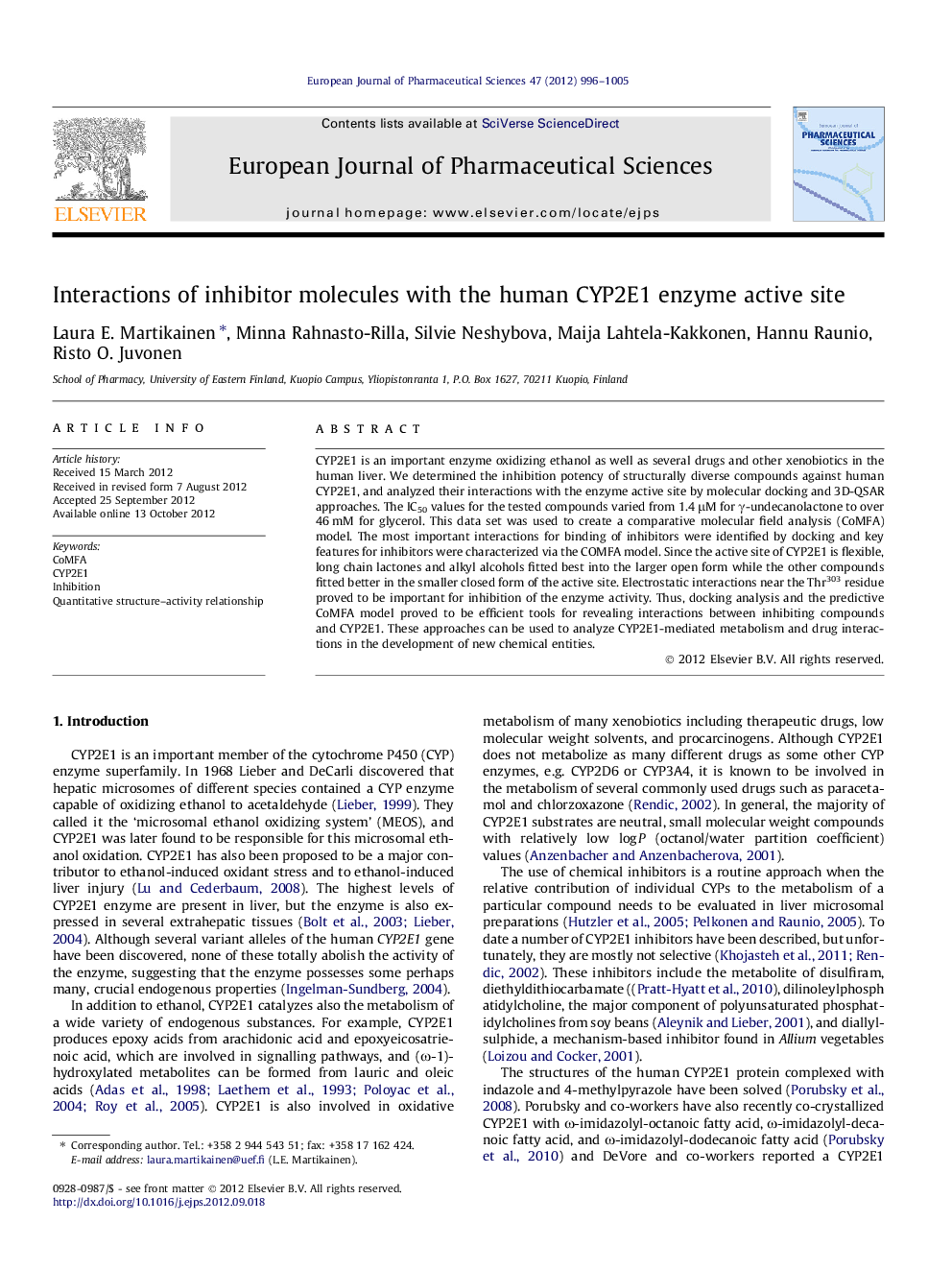| Article ID | Journal | Published Year | Pages | File Type |
|---|---|---|---|---|
| 2480809 | European Journal of Pharmaceutical Sciences | 2012 | 10 Pages |
CYP2E1 is an important enzyme oxidizing ethanol as well as several drugs and other xenobiotics in the human liver. We determined the inhibition potency of structurally diverse compounds against human CYP2E1, and analyzed their interactions with the enzyme active site by molecular docking and 3D-QSAR approaches. The IC50 values for the tested compounds varied from 1.4 μM for γ-undecanolactone to over 46 mM for glycerol. This data set was used to create a comparative molecular field analysis (CoMFA) model. The most important interactions for binding of inhibitors were identified by docking and key features for inhibitors were characterized via the COMFA model. Since the active site of CYP2E1 is flexible, long chain lactones and alkyl alcohols fitted best into the larger open form while the other compounds fitted better in the smaller closed form of the active site. Electrostatic interactions near the Thr303 residue proved to be important for inhibition of the enzyme activity. Thus, docking analysis and the predictive CoMFA model proved to be efficient tools for revealing interactions between inhibiting compounds and CYP2E1. These approaches can be used to analyze CYP2E1-mediated metabolism and drug interactions in the development of new chemical entities.
Graphical abstractFigure optionsDownload full-size imageDownload high-quality image (138 K)Download as PowerPoint slide
